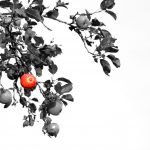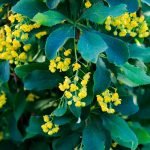Echinacea: A Brief History of Use and Research
Keri Marshall MS, ND
Much concern and confusion developed around the turn of the century about one of our most beloved and trusted botanicals that has been used successfully for centuries past. Echinacea has been utilized for hundreds of years in North America in part because it is a botanical that is native to this continent. It was used extensively by Native Americans and by eclectic physicians in the late 19th and early 20th centuries. By 1921, echinacea was by far the most popular treatment prescribed by eclectic physicians to treat a wide range of conditions, including syphilis, dysentery, and even snakebites.
However, echinacea has received negative media attention in recent years, causing confusion as to whether or not this botanical actually works. The confusion stems from some negative outcome studies that were published several years ago, in reputable journals, which implied a message that echinacea does not work. This message was inappropriately spread through the media and caused a great deal of confusion for practitioners and consumers who have found echinacea to work very well for the immune system.
According to sales figures reported in a 2009 issue of the Nutrition Business Journal,1 annual sales of echinacea products in the United States exceeded $120 million, and it was reported in the early 1990s that physicians in Germany write more than 3 million prescriptions for echinacea products each year. Commercial echinacea preparations primarily come from Echinacea purpurea, Echinacea angustifolia, and Echinacea pallida and are widely used for the treatment and prevention of upper respiratory tract infections (URIs). However, there is lack of agreement in the scientific community as to its effectiveness for this purpose, and clinical trials have yielded conflicting results.
Most consumers and physicians are unaware that products available under the term echinacea differ considerably in their phytochemical composition, mainly due to variability of plant material, extraction practices, time of harvest, and overall quality of plant and seed. Unfortunately, if we allow rigorous randomized clinical trials to be the gold standard as to whether echinacea does or does not work, then we will continue to lack a definitive answer. There is also disagreement as to which constituents from echinacea are responsible for its suspected usefulness for URIs and how these act in the body. This lack of knowledge prevents effective quality control of echinacea and limits the ability to conduct successful clinical trials in the greater scientific community. However, there are many things we do know and continue to learn through research.
Root, Aerial Parts, or Whole Plant
As with any plant, the chemical make-up of echinacea is inconsistent throughout the entire plant. For example, recent studies have shown that the root contains a diverse mixture of active chemicals that are beneficial for acute conditions. Harvesting, processing, and manufacturing (as well as which part of the plant is used) will ultimately determine how echinacea affects the immune system. As a general rule, extracts prepared using ethanol contain higher levels of alkylamides and phenolic compounds, while extracts prepared using water are more likely to contain compounds such as polysaccharides, lipoproteins, and glycoproteins.
The current general consensus in the field of echinacea research is that preparations can have immune-stimulatory effects or anti-inflammatory effects on immunity, depending on the nature of the extract used. Echinacea fresh-pressed juice appears to enhance immunity by increasing production of certain cytokines from macrophages and monocytes, particularly for people who find themselves getting sick frequently. It is suggested that this stimulatory effect may aid the body in warding off infection and may be helpful in preventing colds and influenza. Polysaccharides and/or lipoproteins that are present in extracts from aerial parts of echinacea appear to be responsible for immune-stimulatory activity.
Alternatively, there is a growing community of scientists who attribute the usefulness of echinacea in treating infection to its ability to block the inflammatory response, thereby suppressing symptoms (eg, mucous production) associated with an infection. It appears that ethanolic extracts of echinacea roots are most likely to exhibit anti-inflammatory activity, likely due to the presence of alkylamides.
Review of the Research
Much of the confusion around echinacea stems from the following studies. A 2003 study in JAMA by Taylor et al2 found that, when echinacea products prepared from fresh-pressed juice were taken just after the second cold (URI) symptom appeared, there was no measurable beneficial effect for children in reducing the severity or duration of symptoms. The study has since been criticized for using the aerial portion extract instead of root extract or whole-plant extract, including root, and the dosages studied were lower than those recommended by practitioners. A follow-up analysis of this study found that, while this particular echinacea preparation failed to treat URIs in children, it was effective in reducing the occurrence of subsequent URIs in children. This important finding failed to make headline news in quite the same way as the initial finding that it did not reduce symptom severity.
A 2005 study3 in the New England Journal of Medicine focused on several root extracts and URIs but still found no statistically significant effects on duration, intensity, or prevention of symptoms. Concern over this negative finding led some researchers to believe that, although the correct part of the plant was used, the dosage was likely too low to show beneficial effects. Despite awareness of possible problems with the aforementioned studies, the media discussed only a single message and failed to discuss it in the broader context of previous positive outcome studies.
Over the years, several meta-analyses have been performed to explore and understand the vast amounts of research that have been conducted on echinacea. In 2007, a studyat the University of Connecticut combined findings from 14 previously reported clinical trials examining echinacea and concluded that echinacea can cut the chances of catching a cold by more than half and can shorten the duration of a cold by a mean of 1.4 days. In 2006, a review article4 was published in the Cochrane Database of Systematic Reviews on echinacea in all of its forms (root and fresh-pressed juice) and assessed trials for proper methods and outcomes. Of 16 studies that compared an echinacea preparation with placebo as treatment for acute infections, a significant effect was reported in 9 studies, a trend in 1 study, and no difference in 6 studies.
Some in vitro studies have been conducted on various echinacea extracts, which generally show positive results, even more so than clinical studies in humans. Most recently, an in vitro study5 explored echinacea’s antiviral effects and found that in hemagglutination assays echinacea extract inhibited receptor-binding activity of the virus (H1N1 and avian HPAIV), suggesting that this extract interferes with viral entry into cells, which ultimately limits virus replication and dissemination.
Another significant problem that we see in echinacea studies is that many authors do not identify which part of the plant was used. If there is a negative outcome in a study, it may be because the wrong part of the plant was used, but it is often difficult to determine this based on the information given. Also, many commercially available echinacea preparations fail to identify important information on their labels, which may be confusing for practitioners and for consumers. It is important to find a product that properly identifies the part of the plant used and the genus and species. Not every genus and species of echinacea has the same phytochemistries in both root and aerial parts. For example, E pallida root is not a rich source of alkylamides but is still found in many commercial products.
Long-term Use and Autoimmune Disease
Long-term use of echinacea and its role in autoimmune disease have long been debated. The concern often discussed is that, if echinacea is taken long term, it may overstimulate the immune system and result in negative immune effects. This is not a finding that has consistently been reported. To date, the primary documentation that exists of negative findings is a mention in the German Commission E Report and a single case study published in 2002. Clinical studies that have been performed over the past few decades on echinacea have not reported such findings; however, they have reported some instances of a rash following ingestion of echinacea.
Eclectic physicians were not averse to long-term use of echinacea. According to Ellingwood, E angustifolia was recommended for the following chronic conditions: mammary cancer, chronic mastitis, chronic ulceration, chronic glandular indurations, scrofulous nodules, syphilitic nodules, and syphilis. A 2006 study6 explored the use of echinacea in patients with autoimmune uveitis and found that placebo patients who did not receive echinacea as part of their therapy required a longer treatment period with corticosteroids. This study demonstrated that systemic echinacea appears not only to be safe in patients with autoimmune disease but also to be effective in the control of symptoms.
To err on the side of caution, it may be advisable for persons with autoimmune disease to avoid long-term use of immune-stimulating botanicals such as echinacea unless it is taken under the supervision of a qualified integrative health practitioner. Short-term use for acute ailments, particularly of echinacea root extract that is rich in alkylamides and has an anti-inflammatory mechanism, would likely not be problematic in such individuals but rather beneficial.
Conclusions on the Use of Echinacea
After reviewing the research and seeing the volume of studies that continue to be performed on echinacea in varying stages of the immune cycle, I believe we are just beginning to understand the complexities and multiple uses of this botanical. Despite there being some negative studies to date, this does not mean that echinacea does not work. It is rather the opposite in that we are finally beginning to understand how each part of echinacea, root and aerial fraction, has unique phytochemistries that can benefit the immune system in many ways.
What has been determined is that the root fraction, naturally rich in alkylamides, is anti-inflammatory and is likely beneficial in the acute stages of colds or influenza. It may also be more effective when used in conjunction with other immune-supportive herbs such as black elderberry, ginger root, and Andrographis paniculata. To be effective, echinacea root must be taken at high dosage and frequency as soon as symptoms begin to appear. On the other hand, the aerial portion of echinacea, the part that grows above ground, is best taken to stimulate and strengthen the immune system throughout the cold and influenza season for those who find that they continually get sick. Echinacea in this form is thought to enhance the immune system and should be taken long term at a lower dosage. Fresh-pressed juice of echinacea aerial parts is also best taken with other immune-stimulating herbs that are also rich in immune polysaccharides such as Astragalus membranaceus root, larch gum, and Maitake mushroom extract.
 Keri Marshall MS, ND is the Medical Director for Gaia Herbs and is in private practice in the Washington DC area, specializing in pediatrics and chronic disease management. Dr. Marshall received her Naturopathic Medical degree from NCNM, her Masters in Epidemiology from SUNY at Buffalo, and her BS from the George Washington University. She has authored many journal articles, served on several advisory boards and appears regularly in the media. She has also recently been nominated to serve on the Board of Directors for the American Association of Naturopathic Physicians.
Keri Marshall MS, ND is the Medical Director for Gaia Herbs and is in private practice in the Washington DC area, specializing in pediatrics and chronic disease management. Dr. Marshall received her Naturopathic Medical degree from NCNM, her Masters in Epidemiology from SUNY at Buffalo, and her BS from the George Washington University. She has authored many journal articles, served on several advisory boards and appears regularly in the media. She has also recently been nominated to serve on the Board of Directors for the American Association of Naturopathic Physicians.
REFERENCES
- June 2009 issue: U.S. nutrition industry overview. Nutr Business J. 2009;14(6-7):1-13. http://nutritionbusinessjournal.com/june09/. Accessed October 28, 2010.
- Taylor JA, Weber W, Standish L, et al. Efficacy and safety of echinacea in treating upper respiratory tract infections in children: a randomized controlled trial. JAMA. 2003;290(21):2824-2830.
- Turner RB, Bauer R, Woelkart K, Hulsey TC, Gangemi JD. An evaluation of Echinacea angustifolia in experimental rhinovirus infections. N Engl J Med. 2005;353:341-348.
- Linde K, Barrett B, Wölkart K, Bauer R, Melchart D. Echinacea for preventing and treating the common cold. Cochrane Database Syst Rev. 2006;(1):CD000530.
- Pleschka S, Stein M, Schoop R, Hudson JB. Anti-viral properties and mode of action of standardized Echinacea purpurea extract against highly pathogenic avian influenza virus (H5N1, H7N7) and swine-origin H1N1 (S-OIV). Virol J. 2009;6:e197.
- Neri PG, Stagni E, Filippello M, et al. Oral Echinacea purpurea extract in low-grade, steroid-dependent, autoimmune idiopathic uveitis: a pilot study. J Ocul Pharmacol Ther. 2006;22(6):431-436.
Barrett BP, Brown RL, Locken K, Maberry R, Bobula JA, D’Alessio D. Treatment of the common cold with unrefined echinacea: a randomized, double-blind, placebo-controlled trial. Ann Intern Med. 2002;137:939-946.
O’Neil J, Hughes S, Lourie A, Zweifler J. Effects of echinacea on the frequency of upper respiratory tract symptoms: a randomized, double-blind, placebo-controlled trial. Ann Allergy Asthma Immunol. 2008;100(4):384-388.
Schoop R, Klein P, Suter A, Johnston SL. Echinacea in the prevention of induced rhinovirus colds: a meta-analysis. Clin Ther. 2006;28(2):174-183.
Sharma M, Schoop R, Hudson JB. Echinacea as an anti-inflammatory agent: the influence of physiologically relevant parameters. Phytother Res. 2009;23(6):863-867.
Weber W, Taylor JA, Stoep AV, Weiss NS, Standish LJ, Calabrese C. Echinacea purpurea for prevention of upper respiratory tract infections in children. J Altern Complement Med. 2005;11:1021-1026.
Yale SH, Liu K. Echinacea purpurea therapy for the treatment of the common cold: a randomized, double-blind, placebo-controlled clinical trial. Arch Intern Med. 2004;164(11):1237-1241.
Quote for underneath photo:
Echinacea purpurea growing on Gaia Herbs farm in Brevard, North Carolina.










